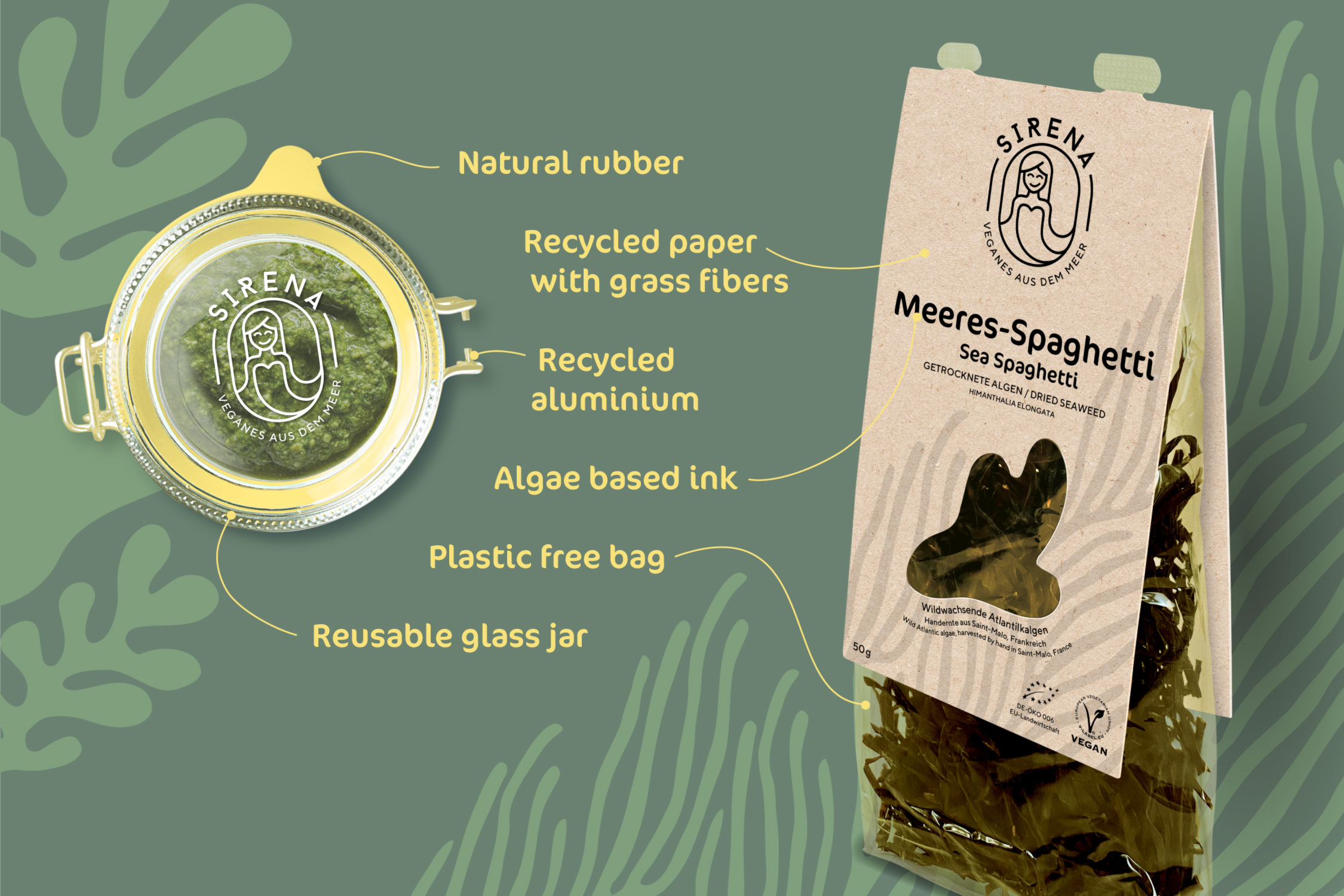Packed with responsibility
Packed with responsibility

Recycled paper with grass fibers
Recycled paper with grass fibers
The production of grass fiber takes place purely mechanically without chemical treatment, causing around 95% less CO2 emissions compared to fresh fiber pulp from wood, requiring little water and only a small amount of energy. Depending on the product, up to 50% of the wood pulp can be replaced by grass fiber, with the same functionality and quality. In this way, the use of fresh fiber pulp from wood can be reduced and trees saved. www.graspapier.de
Algae based ink
Algae based ink
Algae Offset Ink™, a print ink based on algae, replaces petroleum-derived pigments used in conventional offset printing inks and has a much smaller carbon footprint than these. Thanks to their photosynthesis capabilities, ink production from algae can even be carbon negative. Currently, Algae Offset Ink™ is available only in black. www.livingink.co
Plastic free bag
Plastic free bag
Many bioplastics are designed for industrial composting facilities. The material traceless - from the namesake Circular Bioeconomy startup - is, on the other hand, compostable under natural conditions. The raw material for traceless consists of agricultural industry residuals. www.traceless.eu
Reusable glas jar
Reusable glas jar
The decorative jar invite you to recycle it.
Recycled Aluminum
Recycled Aluminum
Seventy-five percent of all aluminum ever produced is still in circulation today because it has a high recycling rate with consumers and can be reprocessed without much loss of metal quality. Recycling aluminum requires only 5% of the energy needed to produce new aluminum. www.e-max.eu
Natural Rubber
Natural Rubber
Today, synthetic plastics are used for many purposes for which natural rubber was used in the past. This is a regrettable development as natural rubber is produced from a renewable raw material. It rots by being decomposed by micro-organisms and thus, reintegrates into the natural cycle. www.fair.zone
Direct Printing on glas jar
Direct printing on glas jar
By avoiding labels and adhesives, the number of materials used are reduced, making it easier to recycle.
Till Krüsmann
Design Direction
Till Krüsmann
Design Direction
Till Krüsmann
Design Direction
Till Krüsmann
Design Direction
Contact
mail@tillkruesmann.com
Contact
mail@tillkruesmann.com
Contact
mail@tillkruesmann.com
Contact
mail@tillkruesmann.com